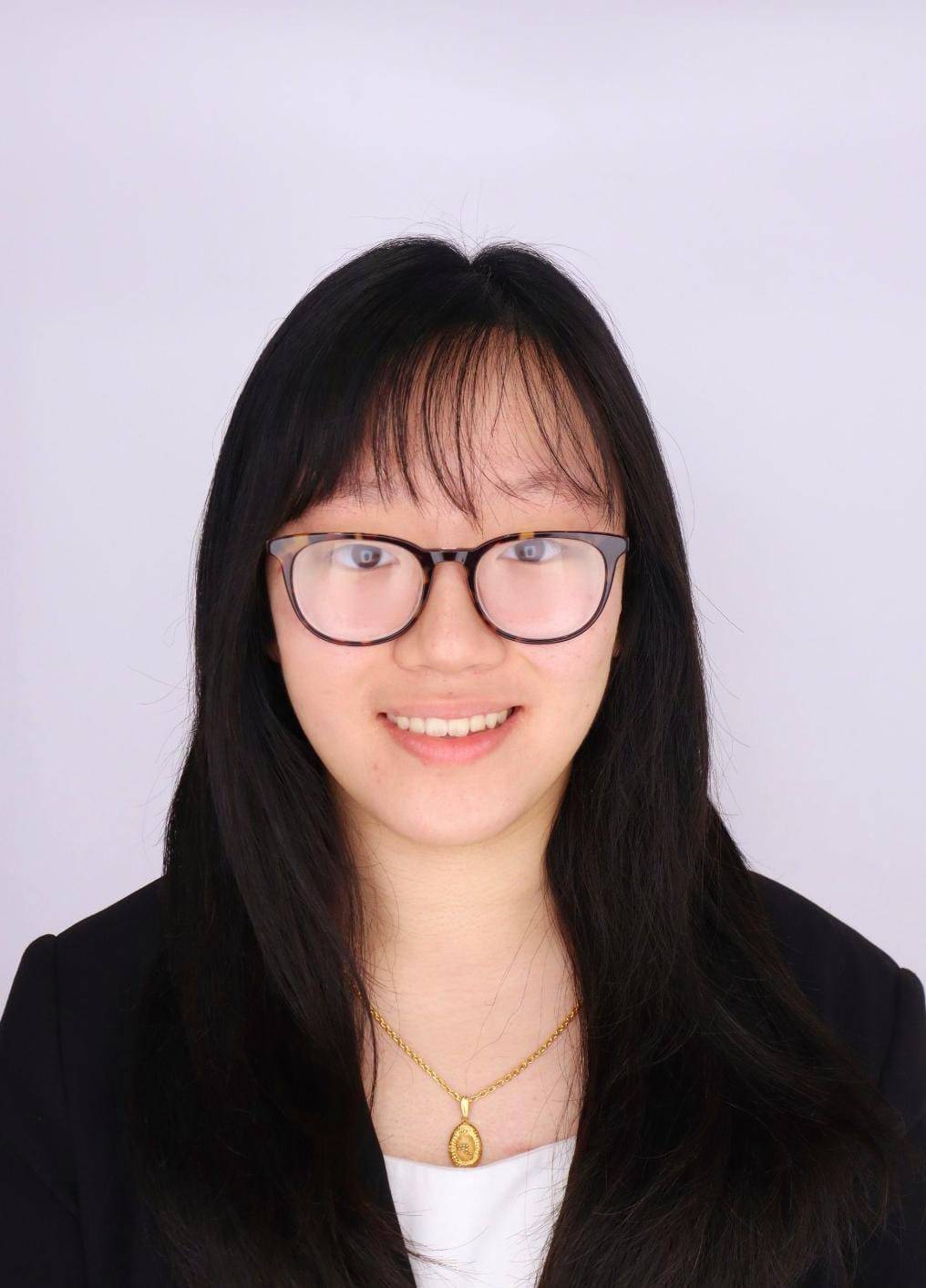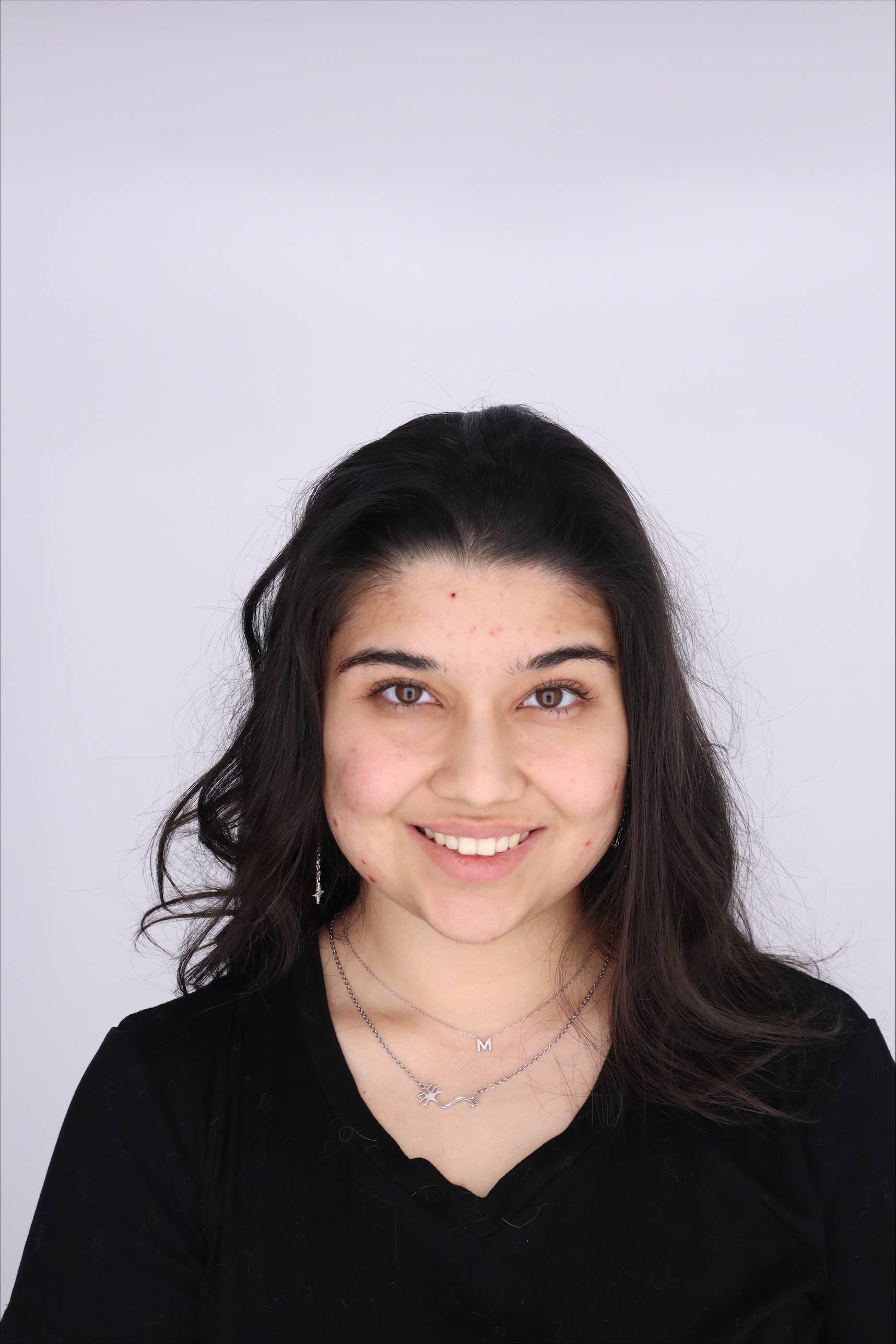Helen Hardin Honors College
UofM Honors Students Present Research at Posters at the Capitol
A group of University of Memphis students presented their research to state legislators and the public at the Tennessee State Capitol in Nashville on April 3rd, 2025. The University of Memphis cohort joined undergraduates from public universities across the state to participate in the event that also included lunch and a short address from Gov. Bill Lee. The Posters at the Capitol event helps to increase understanding of the importance of undergraduate research in the education of our students. The students selected for this prestigious event represent the best of undergraduate research in STEM disciplines at their own institutions.
UofM Participants

Elizabeth Matlock-Buchanan
Tosh Farms Sow Lameness Prevention Project: Using Biomedical Approaches in an Agricultural Setting for Intervention in Culling of Sows due to Lameness
Faculty Mentor: Dr. Jessica Amber Jennings
Abstract: In the swine industry, sow lameness can be an important cause of economic loss for pig producers. Lame sows are typically euthanized resulting in loss of sow and current/future progeny. A primary cause of lameness is infection in cracked and overgrown skin on the hooves, which can lead to osteoarthritis, lesions, and osteochondrosis, among other ailments. Standard of care treatment of foot lesions depends on early recognition and aggressive antibiotic medication before deep-seated abscessation has occurred. Hydrogels and chitosan silver composites have demonstrated efficacy in preventing infection-causing biofilm formation and can form a barrier on the skin, making these composites potentially beneficial as wound treatments. The use of silver-loaded hydrogels has multiple advantages over the standard of care treatment in that gels do not require reapplication for several days, do not contain traditional antibiotics that promote antimicrobial resistance, and form a barrier to support moist wound healing and while preventing further contamination. The purpose of this study is to obtain preliminary data on the utility of hydrogel materials with and without antimicrobials in treatment of lesions in sows. We will follow a small cohort of sows and perform assessments of treated sows.
Jake Stewart
Barrier Effects on the Escape and Pursuit of an L1 Pursuer and L2 Target
Faculty Mentor: Dr. Thomas Hagen
Abstract: In mathematical pursuit and escape games a pursuer (agent 1) tries to catch a target (agent 2) by closing the distance between them. Both pursuer and target can move if their movement is unobstructed. The distance in traditional games is taken as the Euclidean distance given in terms of the L2-norm where the Pythagorean Theorem holds true. The effects of limiting one of these agents to movement measured in the L1-norm and the addition of a finite, straight-line barrier, or obstacle, were investigated, both analytically and numerically. The earliest time the pursuer and target can meet defines their dominance regions. It was found that even with lower speed (up to a ratio of ), an L2 target can escape from an L1 pursuer if the target takes the “optimal” path within its dominance region. Escape is defined when the target’s dominance region becomes unbounded. When introducing the barrier, there are three cases for the L1 pursuer’s path: one axis of movement (AoM) blocked, both AoM blocked, and no AoM blocked. The cases with single AoM and both AoM being blocked results in global change of the dominance regions, whereas the case with no AoM blocked results in local change.
Malak Moustafa
The Effect of Transcranial Magnetic Stimulation Coil Orientation on Treatment Efficacy for Clinical Depression
Faculty Mentor: Dr. Amy Curry
Abstract: Transcranial magnetic stimulation (TMS) is a non-invasive technique effective in treating mental disorders like depression by applying magnetic fields to specific brain areas to induce electric currents. Depression is characterized by hypoactivity in the left dorsolateral prefrontal cortex (DLPFC) and hyperactivity in the right DLPFC. High-intensity repetitive TMS targeting the left DLPFC is an FDA-approved treatment for drug-resistant depression. However, individual variations in brain anatomy influence the ideal stimulation location, and coil orientation can further impact TMS efficacy by altering electric field (E-field) distribution and activation volume. This study used SimNIBS 4.0.1 to simulate TMS at four common DLPFC stimulation sites, representing various placement techniques. For each location, three coil orientations (Nz, FCz, and Oz) were tested while other parameters remained constant. Results revealed significant differences in TMS outcomes based on coil orientation. Nz and Oz orientations produced similar results, while FCz yielded lower E-field strengths but higher activation volumes. The impact of coil orientation varied with stimulation site, underscoring the importance of individualizing TMS protocols. These findings suggest that customizing coil orientation based on the target region and patient anatomy can optimize therapeutic outcomes, improving the efficacy of TMS for treating depression.
Michelle Lee
Inflammatory Response of Contaminated Burn Wounds Treated with Electrospun Chitosan Membranes Loaded with Biofilm Inhibitors and Bupivacaine
Faculty Mentor: Dr. Jessica Amber Jennings
Abstract: Burn injuries activate a robust inflammatory response, which is crucial for tissue repair but may cause adverse effects, such as prolonged healing, if not properly managed. Local anesthetic bupivacaine (BUP) and biofilm inhibitor cis-2-decenoic acid (C2DA) released from electrospun chitosan membranes (ESCM) have been shown to affect inflammatory responses in vitro. In this study, we evaluated inflammatory response in a murine model of contaminated burn healing.We hypothesized that the inflammatory response, as determined by depth of basophilia, would be minimized using ESCM loaded with BUP and/or C2DA compared to gauze and commercial standard of care controls, Silverlon dressing and silver sulfadiazine cream. We used a brass comb scald model with P. aeruginosa (103 CFUs) inoculation in Wistar rats to model contaminated burn wounds. BIOQUANT image analysis software was used for imaging histological slides. Histological evaluation of burn depth at 3 days post burn showed infiltration of immune cells, i.e., neutrophils, extending until the deep dermis layers for all animals. Results suggest that the dressings were able to prevent the damage from spreading to the healthy tissue at the zones of stasis/interspaces. While not statistically significant, the ESCM+Combo group appeared to minimize the inflammatory response of the burn wound.
Mira Umarova
Co-option of Two N-alkanes as a Brood Pheromone Modulating Foraging Preferences in Temnothorax Ant Workers
Faculty Mentor: Dr. Philip Kohlmeier
Abstract: In social insects, specialized foragers fulfill the nutritional needs of all colony members. This study investigates the chemical cues used by Temnothorax longispinosus ant larvae to increase protein-foraging in foragers. Based on previous chemical analyses, we tested whether two larva-biased n-alkanes function as brood pheromones. Colonies lacking brood were exposed to synthetic versions of n-C27 and n-C29, which are more abundant in larvae than in workers. A combination of n-C27 and n-C29 increased protein-foraging to the same level as full larval Cuticular hydrocarbon extracts, while n-C27 and n-C29 individually did not elicit the same response. n-alkanes can be found across insects and are involved in waterproofing the cuticle. Our findings provide the first evidence that a combination of two specific n-alkanes has been co-opted to additionally function as a brood pheromone in ants, influencing worker behavior to meet larval nutritional needs. This suggests a quantitative mechanism where the relative abundance of these compounds plays a key role. Understanding these chemical communications offers insights into colony homeostasis and social behavior evolution in ants. Our findings contribute to a broader understanding of how chemical signals mediate complex social interactions in eusocial organisms, providing a foundation for future studies on chemical communication.
Nima Aflaki
Mechanistic Investigation of Substrate Docking in a Traceless Tether Catalyst
Faculty Mentor: Dr. Timothy Brewster
Abstract: Our lab has designed a novel, regioselective dock and release system for C-H functionalization, aimed at producing poly-substituted aromatics more efficiently. We believed that our dock and release system can be made possible by using a traceless tether based on triazolopyridine (tripy) which provided stability and the correct geometric alignment for substrates to collide and react. We synthesized our reactants and combined it with the tripy, water, and a proton donor to test for C-H activation was possible. We conducted this reaction in different conditions of water concentration, temperature, with different tripy variants, and with and without palladium. By using a Flourine-19 NMR we were able to determine the concentrations of our reactants and products at different times during the reaction and find the equilibrium and kinetic properties of our dock and release system. The results indicated that the reaction was proceeding successfully with sufficient yields without the metal, however failing whenever we added the metal because the tripy was not stable enough. These results successfully demonstrate our dock and release mechanism for regioselective C-H activation which has the potential for transforming effects on the production of poly-substituted aromatics.





